Ancient Humans in Indonesia
Of course we all already know that ancient humans have many races and tribes respectively. While sitting in school a lesson about early man became one of the material in history lesson. Apart from a controversy stating that humans are created from the kerayangmana embraced in the theory of evolution, even so you can make ten types of early humans in Indonesia.
Generally, early humans are divided into three groups, including Homo (intelligent human), Meganthropus (large man), Pitecanthropus (ape man walking upright). There are several places in Indonesia that became the location of the discovery of these valuable fossils. And these places have been assigned as well as the development of the region in the country of Indonesia. And the types of early humans and inventors we can see in the following reviews which have been quoted from more than one source.
However, it should also be borne in mind that this review is not an ethical foundation nor is it devoted to scientific interest, it is only an opinion and also a personal opinion that we hope to be able to provide benefits to all of us. Here are the types of early humans as well as discoverers:
Meganthropus Palaeojavanicus
This ancient human species has been discovered by one of the archaeologists who came from a windmill country, the Netherlands, named Van Koenigswald. The archaeologist first discovered this fossil in the Sangiran area in 1936.
The physical characteristics of early humans from Indonesia differ from other ancient human species scattered throughout the world. In that era, the fossil is found a lot of fossils that conditions resemble western people.
Therefore, when archaeologists have found a different fossil from past discoveries, it has aroused the scientific excitement of archaeologists in exploring the fossils of early humans found in Indonesia.
Scientists estimate that this ancient man has lived about a million and two million years ago. It is also evidenced from the fossil condition by using decay techniques with carbon. This makes the scientists can estimate the age of these fossils.
And in the presence of such a part-time trait, there are many fossils, rocks and other elements that we can estimate. Even with the age of our beloved Earth it can be estimated using half-life rather than carbon elements in materials or substances. Meganthropus Palaeojavanicus has the following characteristics:
- Has thick cheekbones.
- Has a strong jaw muscle.
- Has no chin
Has a. - backward sharp bulge.
- Has a prominent bony shape.

- Strapping stature, lower jaw.
- Meganthropus, Sangir consume plants, also live in groups and nomads.
Pitecanthropus Erectus
Ancient humans of this type have lived on the territory of Indonesia about one to two million years ago. In the Indonesian archipelago, which, according to archaeological history, had once experienced more than one natural disaster. Starting from the things that bind to make the region in Indonesia consists of various islands. A doctor from a Dutch country named Eungene Dubois was the first inventor of humans here.
Pitecanthropus has the following characteristics:
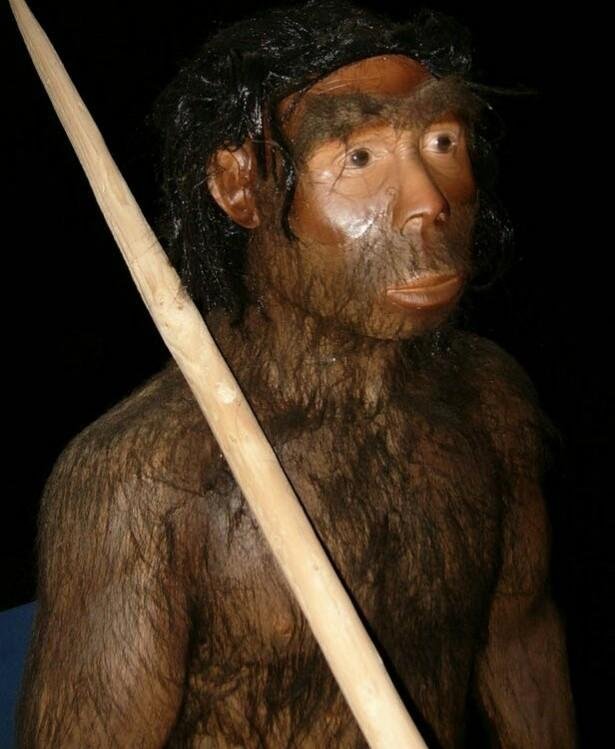
* Walking upright, but with a skull structure that is almost the same as the ape structure. * Therefore ancient humans of this type is also known as the ape man who walked upright. * It is estimated that the size of the brain is small because of the skull structure that resembles an ape. * This causes the ancient men of this type to have almost the same level of intelligence but also above the animal instinct. * Early humans type pitecanthropus is a nation or a food gathering or commonly called Food gathering. * Keprimitifan at that time will not be much different from the life of the apes in the modern era. * This ancient man was highly welcomed by the materialists, because it was a proof of the existence of a transitional creature that strengthened the theory of evolution had Charles Darwin.
It has physical features that are upright and also possibly about the magnitude estimated to be the greatest of the time. and with a small brain size when compared with other creatures then it has obtained a result that is quite surprising that while in a state of collecting food and also the need for pregnancy, there is also a trail that shows the existence of a group meeting, water finger jangkah.
Pitecanthropus Soloensis
Is a type of early humans originally from the area Ngandong, Solo, Central Java. Not only from the aspect of the land, there are also boundaries of marine areas in the country of Indonesia which for our country is very important. This has been stated in the Indonesian sea border which has become a decree among the international citizens.
And early humans Pitecanthropus Erectus characterized as follows:
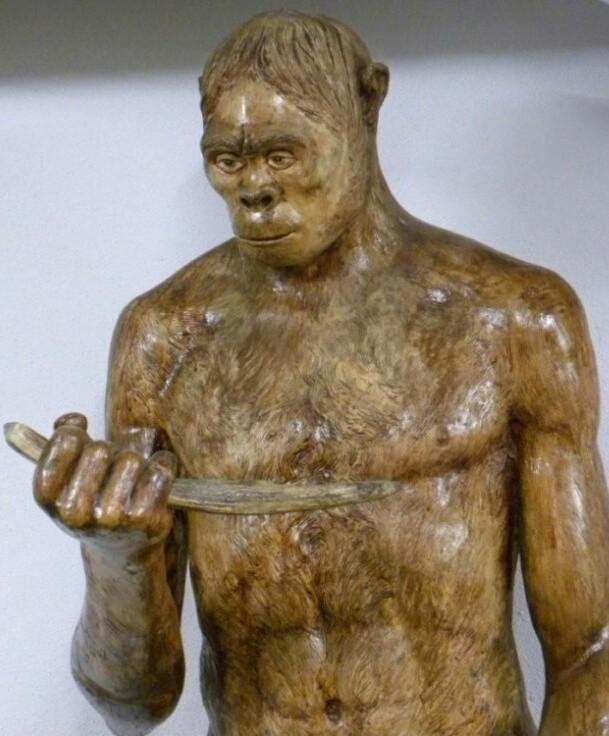
* In the skull area, has a thick forehead bulge. * Has a wide nose, and strong cheekbones and protruding. * Has a height of about 165-180. * A plant-eater is also a meat alias eaters everything. * Has a strong lower jaw. * His cheekbones are thick. * Having a spine shape that stands out is also sharp. * Strong stature, and also has a strong and large neck muscle attachment.
Pitecanthropus Mojokertensis

Without having to know the image of this type of early humans, of course we already know immediately that Eungene Dubois has found it in the area of Mojokerto, so he called that fossil findings it is a great discovery in this century. But unfortunately, the process of excavation that they do in the area of Mojokerto is inevitably has damaged the fossil bone.
This resulted in some parts of the fossil being destroyed so that there are some details that did not work to be saved perfectly. And all types of ancient men who exist in Indonesia has become an insight for themselves as well as teaching materials at school.
In general the physical characteristics of early humans from Indonesia do not have much difference with the characteristics of modern humans. Hopefully it can be useful for you all and can also add useful insights with you reading this paper. We need to reiterate that the content we have written does not come from a literary scientific source. It will be more useful if the explanation of early humans, its types as well as all its explanations can be useful to you all.
Homo Floresiensis
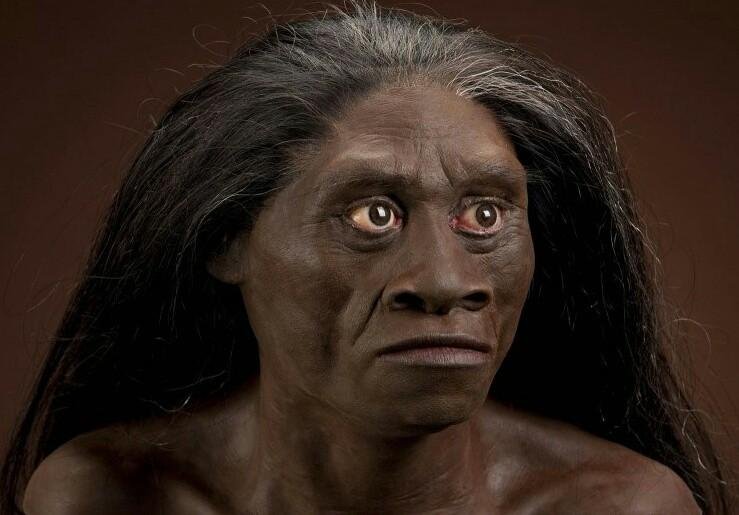
Early humans of this type have a habit as well as lifestyle that is almost the same as today's humans. In fact, at that time, the homo man had an unity in acting as a characteristic of human beings who had become economic beings. In those days they did not use sophisticated tools, but using simple stones which they then sanded them. Second, the primeval homosexual type also has the awareness of the people around him. It makes for racial similarity.
Judging from its name we may be somewhat fooled, it is because the Dutch archaeologist did not call the ancient human fossils his findings with his own name, but instead use the name of the place where he found it. And the other name of Homo may be interpreted as a matter of sexual inclination among men.
- Has a wide face and nose
- Has a prominent mouth shape
- Has a prominent forehead shape, but unlike the ancient human species Pitecanthropus
Has a physical form that has resembled the physical form of humankind today - The height ranges from 130-210 cm
And weighs in the range of 30-150 kg - Early humans of this type are estimated to have lived approximately 40,000-25,000 years ago
Homo Wajakensis
This wajakensis comes from Wajak. The problem that often occurs in the era of early humans of this type is the existence of disagreements among the groups that it makes the shape of the fossil form to be different. We are all just able to estimate how social life is. even scholars have conducted a study on the influence of geographical arrangements in Indonesia on climate as well as natural conditions. And with that as far as what we have anticipated, the social conditions of early human life may be no different from the present conditions except in terms of how to communicate.
In a place called Wajak, which, when depicted near the area Tulungagung in East Jwa, in 1889 Eungene Dubois talah find an original human fossils from Indonesia. And the discovery is an important discovery, because it seems to have found a piece of puzzle that has been lost which proves the relationship of humans and apes. The fossils of ancient human origin of Indonesia has become a bridge that connects it. Similarly, a Darwinian theory has been put forward in his book The Descent of Man or the origin of man.
Homo Soloensis
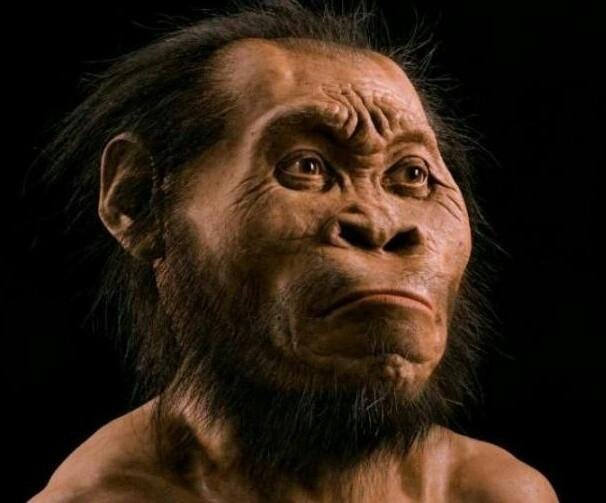
It is an ancient human type of homo that has been found fossilnya in Solo area of Central Java. Who are the people or archaeologists who have done research on early humans in the territory of Indonesia? Certainly the most popular are Eungene Dubois, then Van Koenigswald, then Weidereich. And here is a description of the primordial human type of soloensis.
- Other researchers may not have as many records as the records of the three names mentioned earlier.
*Even so their contributions have made a treasure for the kinds of ancient men in the Asian region and of course in the world
The bengawan river of Solo is a heart of primitive life that happened in the past. There are many findings in this area indicating an ancient human tendency to live with a proximity to a water source. which at that time the irrigation system has not been found to make it seem to be a compulsion on early humans to not far in giving an intervention. And having a dwelling by the river, it has provided an advantage to early humans.
Pitecanthropus Robustus
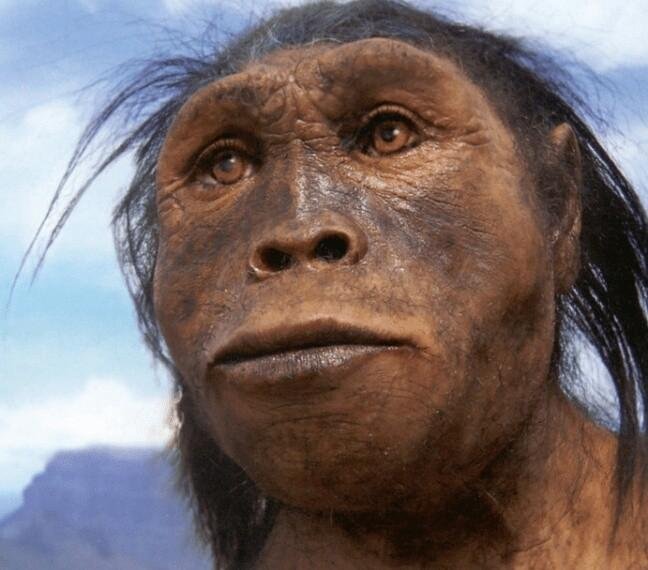
Early humans who have a large jaw shape are Pitecanthropus. By having a large jaw, the researchers estimate that this ancient human species like to eat plants. The function of the big jaw is that in the activity of chewing food will become easier and faster, it makes this nation prefer to live alone. Here are the features of early humans of Pitecanthropus Robustus type:
- It has a large jaw shape which indicates that the coverage of the mouth capacity of Pitecanthropus Erectus is greater than that of today.
- The amount of mouth capacity is possible if the ancient man of this type shows his identity.
- Can be interpreted that ancient humans of this type is a natural form of the human kind in the present day. What distinguishes is the exact lifespan and also the way they communicate in social interaction at that time. including also in the use of tools.
This ancient human type has put forward the mind rather than the instinct. This has been proved by the existence of many relics in the form of stones, axes and also many other tools that are used as a supporter of life every day.
Another point is at the discovery points of archaeologists, that the homo humans are not too close to the river, which indicates that they have made a place to live or a place to live in a nice place to live even though not near the river or other water sources .
Pitecanthropus Dubuis
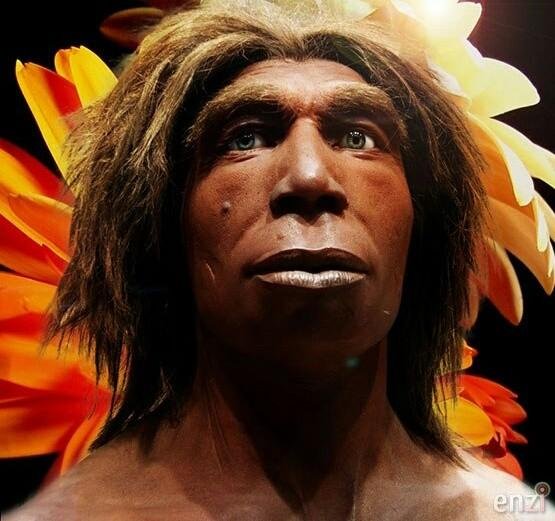
When translated into a kind of ape man walking upright is a kind of dubious early humans. Because the fossils found in the Sangiran area but the skull structure and bone is not mutalk included in the physical characteristics of early humans pitecanthropus and meganthropus species. The findings and research of a Dutch archaeologist is an important finding. Although for some Indonesian citizens the excavations and expeditions are considered as coercion and also the occupation of rights.
Our citizens are also forced to be employed to become diggers. And according to historical records, many victims have fallen from the Indonesian nation, but in a cunning and neat way, the archaeologists from the Netherlands who diboyi by the colonial government, has managed to bring a propaganda in the form of fossil discovery of early humans of this type. so that it makes the working system in the expedition rodi excavation did not appear appointed in public. Due to the large number of findings in the area around the Bengawan Solo river, the researchers made the soil layer in the area into three layers:
- Layer Jetis, which ancient human species Pitecanthropus Robustus has been found or also known as a layer of lower pleistosen.
- The Trinil layer, which an early human Pitecanthropus Erectus found. In the layer is also known as the middle pleistosen layer.
- The layer of Ngandong, which is an ancient human type of Pitecanthropus Soloensis has been found. And we also recognize it as the lower pleistocene layer.
And with these traits, Meganthropus has a strong and sturdy physical form. And also with the abundant amount of plants which is the main food. The researchers estimate the early humans of Meganthropus species to live in a group way and also tend to settle in a place. Changes in culture and social life is indeed not the same as in the present. But there is true and intense research, their lives can be predicted.
Coupled with a lot of support that is very influential for the Netherlands, it makes the Indonesian nation very difficult to realize independence. In solving the conflict between the Dutch and Indonesia does not only involve the two countries, but also various other countries.
Homo Sapiens
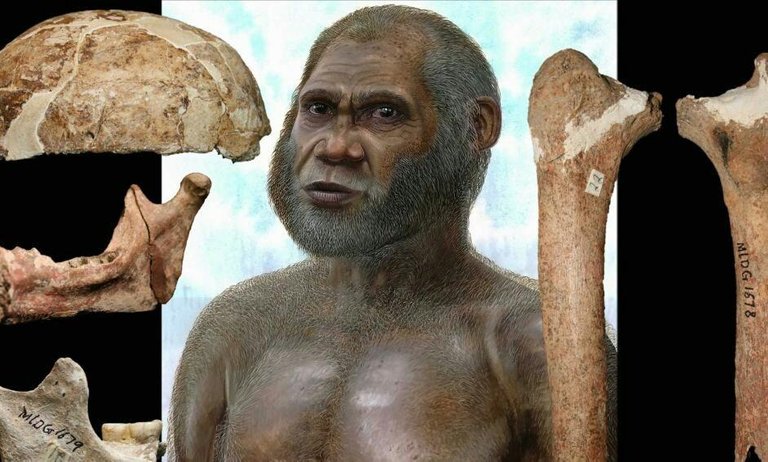
Early humans of this type can be interpreted with intelligent humans. They are from the holozen era. They have a body shape that has resembled the human body shape of Indonesia in the present day. In those days, early humans of this type have had the structure of an organization and also the division of tasks. Based on the research, not only physical form, but also with their social life we can review. And of course with the enactment of research intense and in the long term.
This ancient human homo sapiens type refers if humans are creatures that have an advantage over reason. By studying this ancient human homo sapiens type, our lives can all grow in experience and treasures with a particular product. And the characteristics of early humans of this type are:
- Have brain volume is between 1000cc-1200cc
- Has a height of about 130-210
- The presence of a muscle in the nape
- Teeth experience a shrinkage
- The face is no longer protruding forward
- Standing and also walking with the body upright
- Has a jaw and bone of the jaw part is not too strong
With us reading the above specifications, therefore we can know that the ancient man type homo sapiens have used his mind. Although still in simple terms, but these early humans have had the characteristics of hunting. Not only in collecting foods like other types. This ancient human homo sapiens has also shown that the Indonesian nation has a great variety of cultures and races as well.
With the green theory of evolution in the present era, it appears that ape humans are a human kind but also different in race. It is the same with Asian, European and African races. Even fellow citizens from Asian countries also have a variety of cultures and many races. Here are the characteristics of the ancestral race of humans:
- Mongoloid race, has a characteristic yellow-skinned, slanted-eyed, and straight-haired. The race is spread across East Asia, namely China, Korea, Japan, and also in Southeast Asia.
- Caucasian race, is a race that has white, tall, straight haired, and sharp-nosed. The race is spread across Europe, some in northern India (ie the Aryan race), others to Jews (ie Semitic races), and others to Turkey, Arabia, and other parts of Western Asia.
- Race Negroid, has the characteristics of black, curly hair, thick lips. The race is spread to * Australia (ie Aboriginal race), to Papua (the Papuan race which is the original inhabitant), and also to Africa.
So are the ten ancient human species that exist in Indonesia that still remain in the National Museum.
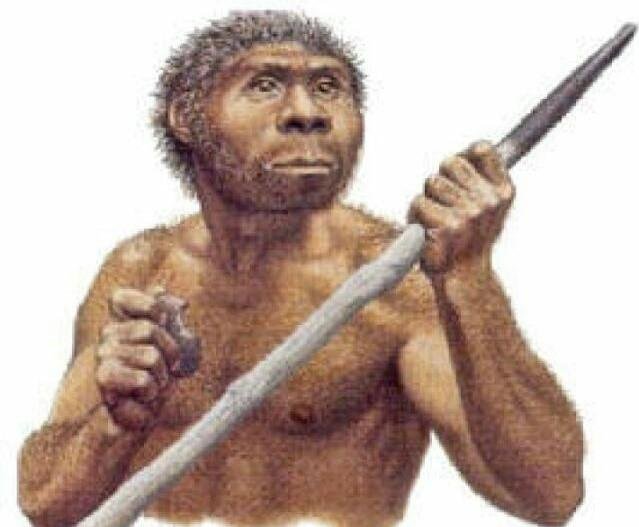
World of Photography
>Visit the website<
You have earned 6.50 XP for sharing your photo!
Daily photos: 1/2
Daily comments: 0/5
Multiplier: 1.30
Block time: 2018-05-11T14:46:09
Total XP: 128.85/200.00
Total Photos: 23
Total comments: 0
Total contest wins: 0
Follow: @photocontests
Join the Discord channel: click!
Play and win SBD: @fairlotto
Daily Steem Statistics: @dailysteemreport
Learn how to program Steem-Python applications: @steempytutorials
Developed and sponsored by: @juliank